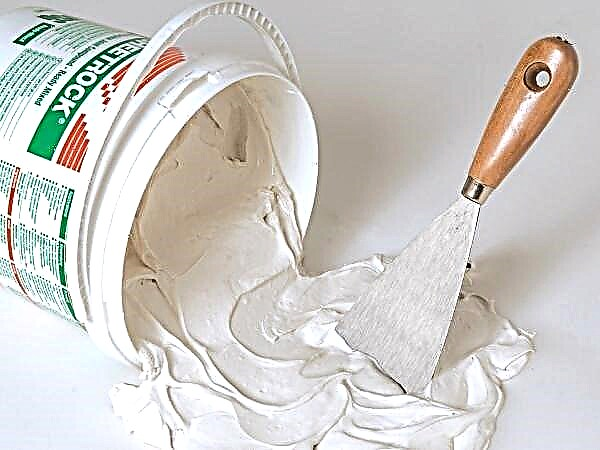
Finishing materials for walls and floors are diverse. For all its merits, traditional ceramic tiles still look patterned and predictable. But materials from antique brick are a completely different matter. This material is much more attractive and romantic.
Features
From old bricks, a very durable and attractive tile is obtained.
In addition, such materials have several other advantages:
- they are easy to install, saving the strength and time of the master,
- do not occupy excess space in the room,
- reduce wall loads
- They are environmentally friendly and therefore pose no health hazard.

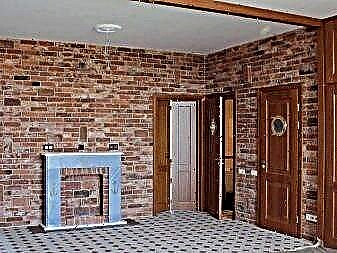
Reproduction of the old masonry is provided by a special texture, on which the weather elements and time itself worked.
In the manufacture of such tiles, raw materials are taken in the analysis of buildings built 100 (or more) ago. Such a solution ensures the optimal preservation of bricks and reduces costs (payment for intermediary services). Experienced restorers, who know very well how to form a unique decorative surface, work on creating tiles.
Such a finishing material is better than solid bricks, because:
- suitable for facing any surfaces without increasing the load,
- allows you to spend less money on transportation,
- requires less time than a full masonry.
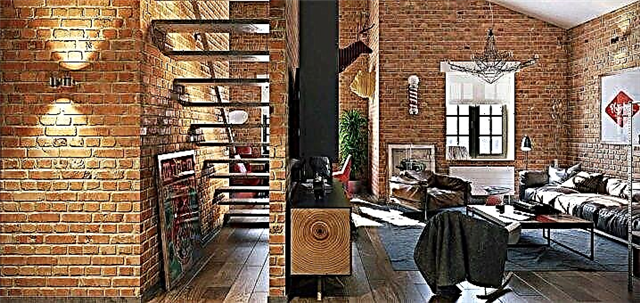
The thickness of the tiles is 15-35 mm. As a rule, they have the original brand.
Which are there?
There are several varieties of antique brick tiles that are suitable for loft, provence or vintage. In addition, such products are available for both facade and interior work.
Also, tiles from old bricks can vary in their shades. The most common are products of red, red and brown shade.
Old brick - the material is very expensive and high quality. Before buying, you need to carefully check the documents from the supplier, so as not to purchase substandard material.
How to produce?
There are several mandatory steps for making such a spectacular tile:
- bricks are washed with special mixtures supplied under high pressure,
- raw materials are disinfected
- the tiles are treated with hydrophobic impregnation,
- lime is “fixed” so that it does not crumble.
Antique brick converted into tiles can be decorated with acrylics. But even without additional decoration, the unusual texture, color and relief are very attractive.
How to make a decorative brick tile with your own hands, see the next video.
Where can i use it?
It is possible to apply such a tile in residential buildings and apartments, in shops and offices, in workshops and other premises.
Decorative coatings create a very good look if used in decoration:
- walls
- tracks
- floor and fireplace
- chimney and other elements.
Accurate reproduction of the situation in ancient buildings - this is a characteristic feature of quality material.
How to lay a tile?
If turning to professionals seems too expensive, you can lay out such a tile with your own hands. To work, you will need:
- acrylic-based structural primer,
- tile adhesive
- trowelling mixtures of bright colors or cement.
The choice of a specific manufacturer of such materials should be made as carefully as possible. It is necessary to take into account practical characteristics, as well as rely on the feedback of those who have already used one or another option.
Aged brick tiles are laid only after applying a special primer to the leveled surface. Then the coatings are lubricated with glue and fill the gaps between them with a special mixture.


For internal work, slabs made of bonded parts of bricks are suitable for framing key interior elements.
You can surround them with paintings or shelves full of photographs, cups and diplomas. Antique tiles will also look good around hunting trophies. The gradient of red and red tones forms the most unusual decorative solutions.
Selection tips
In a loft style environment, it is recommended to use tiles cut along the bump or spoon side of the brick. Such a coating allows you to create the effect of a wall corresponding to the century before last. The simplest interior solutions that can be created without ancient motifs require only a rich texture. A suitable material is the inside of an old brick.
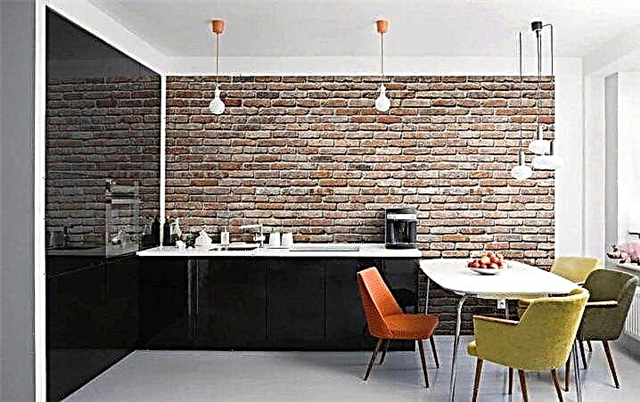
To make the finish easier, and as a result an elegant interior is formed, it is recommended to select products according to brand, size and color individually.
The most expensive options (with a vegetable brand) are made of brick laid in the XVII century. Later they began to use the designations corresponding to the first letter in the name of the owner of the enterprise. When there were a lot of brick factories, everyone began to stamp with a full name.
State industry put a double-headed eagle. During the reign of various emperors, he was surrounded by a stroke of various shapes, which allows connoisseurs to accurately date the material.
Tiles made from this material last longer and look much more aesthetically pleasing. (compared to imitation of antique brick). The strength and resistance of these materials to external influences are confirmed by the fact of long operation.

Styles
Antique brick tiles can be used in interiors of various styles, the choice of which is determined by the characteristics of the room.
So, for the direction of the loft, attics or upper floors, where there are very few partitions, are more suitable. Large windows, an abundance of metal and reinforced concrete correspond to the canons of this style, which implies emphasized rudeness and rigor. Similar motifs should have a brick tile.
The surface of antique bricks will look harmoniously in a vintage style full of artificially aged and antique objects.


For Provence style, it is recommended to choose a tile from an antique brick, which has a lighter shade. It can be a beige, white or dull surface finish.
Varieties
There are two main varieties of antique tiles: clinker and gypsum. The material of the first type is characterized by excellent quality, high strength and fire safety, insignificant moisture absorbing properties. Tiles are made from clay by roasting at high temperature.


Clinker tiles have a variety of color options - from brown to sand and gray. Such tiles will look good in an antique interior or in a room decorated in an industrial style. Since indoor brick is not exposed to adverse environmental influences, you can be sure that it will last several hundred years.


Gypsum tile also contains lime. This material is environmentally friendly, has disinfecting properties, supports the level of humidity a person needs in a room. Plaster products are mainly presented in white, which allows you to harmoniously combine them with wallpaper and decorative plaster in any interior. If desired, the brick can be painted in the desired color.
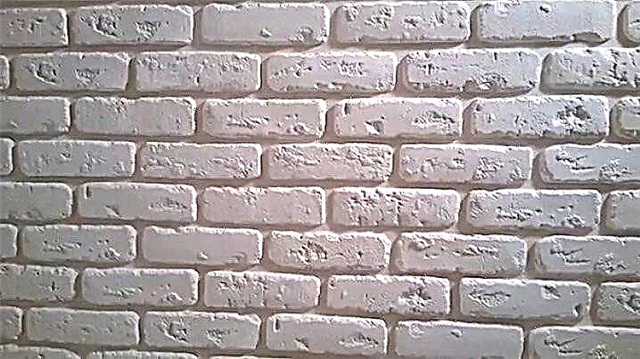
Advantages and disadvantages
The tile imitating an old brick has many positive characteristics:
- long service life
- a wide variety of shades and textures,
- resistance to aggressive environments,

- ease of care
- ease of installation
- resistance to external influences.


Among the minuses of this tile can be noted:
- fragility of the material
- high cost (you can search for your favorite tiles from different manufacturers and purchase it at a better price).

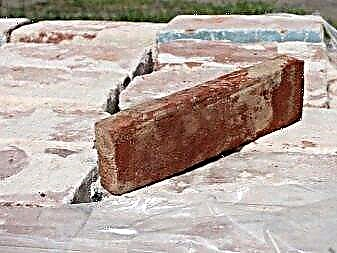
In order for the room not to look heavy and crushing, it is necessary to use the brick fragmentarily, and not to close all the walls in a circle to them.
Reusing old bricks and other used materials is a fashion trend. But how economically justified is this?
Approaching this article, I called more than one familiar architect and restorer, and even an antique dealer. The fact is that in modern interiors the concept of “old tile” has almost lost its true meaning. Situations when they knocked suitable material from the walls, were cleaned of mortar, washed and re-laid - now it is very rare. Alas, there is almost no tile left in our interiors, which really makes sense to save and carefully restore.
“Old” now more often means tiles laid in the 90s, but this view has almost lost its relevance in terms of design. For example, with tara tile in the kitchen it looks worse than new. Another option is the tile, which was laid out in the corridors and bathrooms in the "Stalin" and Khrushchev houses: so far I have often met it at new "old" objects, but only once the customer and I made an attempt to save it on the flights of stairs of one two-story private house. In the end, I had to abandon this idea, because the restoration really cost space money, and it turned out to be much cheaper to put in a new, good, completely similar tile.
Mounting
In order to stick the tiles on the walls, you will need the following tools:
- level,
- putty knife,
- rubber mallet,
- sandpaper.
In the process, do not forget about the rule: the width of the stitch should not be less than a centimeter. If you lay the material end-to-end, without seams, then there will be an overspending of the material by about 15%. Before laying, you need to prepare the wall well: remove old paint or wallpaper, plaster the surface, apply an acrylic primer. When the wall dries, installation can begin.

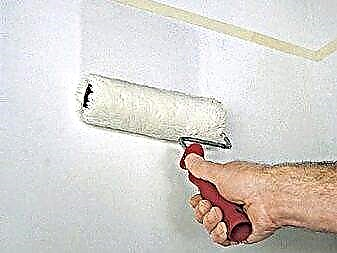
The easiest way to lay tiles using glue. The solution is applied to a small area of the wall. One brick is tightly pressed to the surface, withstand time. Then, so that the product does not move, it is fixed with plastic wedges. The evenness in the sticker will provide the level. If you notice that the tile is gone from the original vector, it must be carefully moved with a mallet, tapping on the side.
First, the tile is glued in the horizontal direction, then you can start work with the second row. With a seamless installation option, the wall will be ready immediately upon completion of work.
If you are laying brick with jointing, grouting can begin only after a day.


Use in the interior
In the interior of modern apartments, tiles are used:
- under the white brick
- under an aged stone with a shiny surface,
- under the old red brick.
White brick can be combined with wallpaper or wall paneling. It will look good in combination with decorative plaster. Fans of Provence style decorating an apartment with white brick will do just fine.
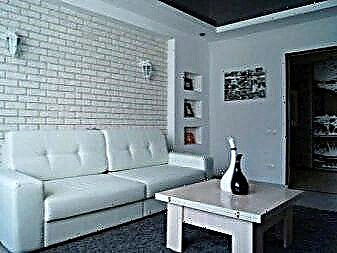

Those who prefer English traditions in the design of the premises are recommended to choose the 3rd version of the material. Red antique brick will look good in the design of the wall near the fireplace. Construction stores offer dozens of shades and a variety of brick textures.


Aged brick tiles - a trend of recent seasons in the interior design of apartments. Most often it can be seen as a cladding for a hallway. If you want to use aged brick in the bathroom or kitchen area (for example, as an apron finish), it is better to choose a non-porous option, then washing the walls will not be a lot of trouble.

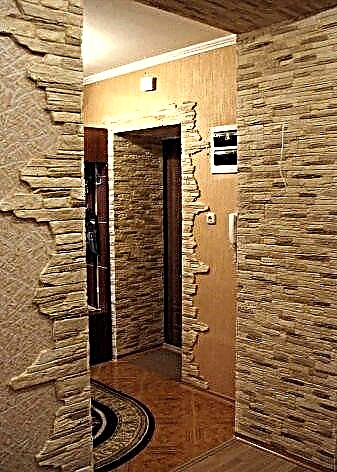
The texture of the aged brick brings cosiness, calmness, a sense of security, the spirit of antiquity to the interior of the room. Such material will be appropriate to apply in the style of loft, vintage, country, gothic.
See the next video for more on this.
4. Heat resistance
Another advantage of the brick over many other finishing materials is its heat resistance. That is why it is so loved to use in the kitchen and in bathrooms, where temperature differences occur constantly. However, it should be remembered that in the "wet zone" the brick needs to be treated with a special hydroprotective solution.
3. The high cost and complexity of creating
If you bought an apartment in a brick house, and the wall can simply be left without decoration, then you are in luck. It’s doubly lucky if it’s an intricate masonry in the “old fund”. Otherwise, buying a brick and laying out a wall can significantly affect the repair budget. An alternative may be ceramic or clinker tiles under a brick, facing brick or even wallpaper with a pattern.
4. Laborious care
If old brickwork with chips and an uneven surface is preserved, then it can be problematic to clean it. But if you cover the surface with moisture-resistant varnish, then you can simply vacuum or even wipe the wall. This problem is almost devoid of brick tiles, the surface of which is absolutely flat.
Pavel Gerasimov: “Imitation concrete tiles cannot be distinguished from antique bricks, but they are more practical and economical”
Four years ago, our workshop used clinker cladding brick in interior design. It doesn’t look very natural, it rolls, crumbles and gets dirty, it’s impractical to wash and wipe it will be a problem. But such a props is inexpensive.
Later it became fashionable to build partitions from antique old bricks or cut tiles from it. This solution is quite interesting and always looks very cool, but is not cheap. Also, the customers of our workshop noted that the old brick in the interior is not very practical: it is painted, leaves marks on clothes, absorbs water, and it is hard to wash. Of course, this may depend on the degree of impregnation, but nonetheless.
Now our workshop for its design projects, in which there is a brick, chooses a tile-imitation of concrete brick. This is a relevant and practical solution that does not hit the budget. Russian manufacturers have learned to make casts that are visually very difficult to distinguish from antique bricks. And they cost much cheaper. Moreover, such a solution is practical - it is easy to wash, it leaves no residue and does not get dirty at all.
Machine
By far, the most productive is the cutting of brick tiles with your own hands using a special machine that resembles a circular saw for wood.
The equipment consists of:

- strong steel bed,
- electric motor with gear
- site for the promotion of the workpiece,
- water supply systems for the work area,
- diamond blade with a diameter of 22 cm.
Such equipment allows you to quickly and efficiently make tiles from old bricks. Water will get rid of dust, and the diamond wheel will do the job exactly to the intended size, making the cut surface completely flat.
Guillotine knife
There is no way to purchase a machine - it does not matter. You can use a mechanical device for splitting a brick or grinder. In fact, the apparatus for cracking bricks is a guillotine, in the lower part of which a workpiece with marking is attached. The knife can be lowered onto it using an automatic machine or a manual lever.
Angle grinder
If you plan to use an angle grinder for cutting tiles from real brick, then you should choose a model equipped with disks of at least 220 mm in diameter.Smaller circles can also be used, but then the brick will have to be turned and cut from two opposite sides. At the same time, the execution time will increase, the accuracy and appearance of the cut surface will suffer. It’s better to choose a diamond disk, you can also make brick tiles abrasive, but such a circle quickly dies. In addition, abrasives often deform and crack, so working with them is unsafe.
In order for the result from working with the grinder to be the most effective, you should properly organize the workplace and prepare personal protective equipment.
- prepare a flat area on which a pre-marked blank is installed,
- make a device for supplying water to the working area, you can use improvised means in the form of a plastic balloon and a medical system,
- the grinder must be held with both hands in order to prevent displacement during its movement,
- the supply wire should be located outside the working area of the tool,
- it is necessary to work with gloves, goggles and a respirator.
Using a tile cutter
Brick tile cutting can be done with a stationary electric tile cutter, only slightly improved. The tile holders must be removed, and in their place install special skids for the brick. This video shows that they were made from the usual building rule:
It is clear that the main thing is to find an old brick, and to cut tiles from it of any size and shape from it is easy even in a home workshop.
Facing with antique tiles
Before laying brick tiles for interior decoration, it is necessary to carefully prepare the surfaces to be cladded.
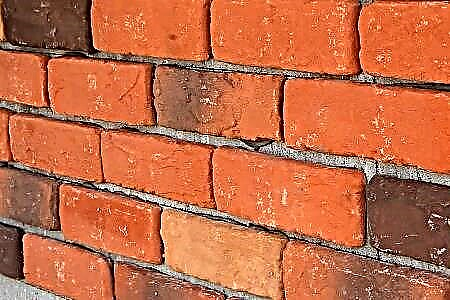
There is nothing new in this work, the set of procedures is standard:
- the elimination of the old coating,
- cleaning, if necessary - washing,
- leveling by applying plaster mortar and its uniform distribution over the surface.
It is not necessary to putty, but deep penetration priming is necessary for better adhesion of the brick tile to the base. Since tiled products made of antique bricks are practically not the same, first you need to lay them out on the floor or a wide table and arrange them in the desired way. You should also choose in advance the method of placing the elements on the wall: open, seam to seam, or your own version.
Any adhesive for ceramics is used as a binder. You can take the ready-to-eat pasta. If there is a dry mixture, then it must be diluted with water to a homogeneous consistency of thick sour cream. The solution should be fresh, it is better to knead it in small portions, since it will not work to put a brick tile on the setting composition. Scope of work:
- In the lower part of the trimmed plane, it is necessary to outline a horizontal line that will serve as a guide for the first row of masonry.
- The adhesive mixture is applied on the wall with a thin layer on an area of 5-6 products. You need to work with spatulas with a straight and serrated blade.
- On the underside of the tile, it is also necessary to distribute a thin layer of glue.
- Brick laying is done from the corner. If there are corner elements, then the installation begins with them.
- The product is pressed against the wall plane, excess glue is removed with a spatula, and the tile is cleaned immediately with a damp sponge or brush.
In order to make the seams even and of the same size in width, plastic spacers or thin profiles are placed between the tiles. Decorative processing is performed in the way that the designer provided. For grouting, grouting is used, glue, there is also an option when the seams remain open. In this case, the tiles protrude from the main plane, creating an interesting effect. In order to protect the cladding from various kinds of contaminants and moisture, it is treated with special solutions that create the film.


